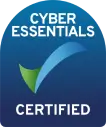[vc_row][vc_column][vc_column_text]WHAT IS A PRINTED CIRCUIT BOARD?
A printed circuit board (PCB) mechanically supports and electrically connects electronic components using conductivetracks, pads and other features etched from copper sheets laminated onto a non-conductive substrate. PCBs can besingle sided (one copper layer), double sided (two copper layers) or multi-layer (outer and inner layers). Multi-layer PCBs allow for much higher component density. Conductors on different layers are connected with plated-through holes called vias which were covered in previous blogs. Advanced PCBs may contain components – capacitors, resistors or active devices – embedded in the substrate.
FR-4 glass epoxy is the primary insulating substrate upon which the vast majority of rigid PCBs are produced. A thin layer of copper foil is laminated to one or both sides of an FR-4 panel. Circuitry interconnections are etched into copper layers to produce printed circuit boards. Complex circuits are produced in multiple layers.
Printed circuit boards are used in all but the simplest electronic products. Alternatives to PCBs include wire wrap and point to point construction. PCBs require the additional design effort to lay out the circuit, but manufacturing and assembly can be automated. Manufacturing circuits with PCBs is cheaper and faster than with other wiring methods as components are mounted and wired with one single part. Furthermore, operator wiring errors are eliminated.
When the board has only copper connections and no embedded components, it is more correctly called a printed wiring board (PWB) or etched wiring board. Although more accurate, the term printed wiring board has fallen into disuse. A PCB populated with electronic components is called a printed circuit assembly (PCA), printed circuit board assembly or PCB assembly (PCBA). The IPC preferred term for assembled boards is circuit card assembly (CCA), and for assembled backplanes. The term PCB is used informally both for bare and assembled boards.[/vc_column_text][vc_empty_space height=”32px” image_repeat=”no-repeat”][/vc_column][/vc_row][vc_row][vc_column width=”1/2″][vc_column_text]HISTORY
Before printed circuits became the common component used in electronics, point to point construction was used. This meant some extremely bulky and unreliable designs that required large sockets and regular replacement. Most of these issues were directly addressed when PCBs went into regular production.[/vc_column_text][vc_empty_space][/vc_column][vc_column width=”1/2″][vc_video link=”https://youtu.be/mb6KnEae5Mw”][/vc_column][/vc_row][vc_row][vc_column width=”1/1″][vc_column_text]For prototypes, or small production runs, wire wrap or turret board can be more efficient. Predating the printed circuit invention, and similar in spirit, was John Sargrove‘s 1936–1947 Electronic Circuit Making Equipment (ECME) which sprayed metal onto a Bakelite plastic board. The ECME could produce 3 radios per minute.
The Austrian engineer Paul Eisler invented the printed circuit as part of a radio set while working in England around 1936. Around 1943 the USA began to use the technology on a large scale to make proximity fuses for use in World War II. After the war, in 1948, the USA released the invention for commercial use. Printed circuits did not become commonplace in consumer electronics until the mid-1950s, after the Auto-assembly process was developed by the United States Army. At around the same time in Britain work along similar lines was carried out by Geoffrey Dummer, then at the RRDE.
Originally, every electronic component had wire leads, and the PCB had holes drilled for each wire of each component. Thecomponents’ leads were then passed through the holes and soldered to the PCB trace. This method of assembly is calledthrough-hole construction. In 1949, Moe Abramson and Stanislaus F. Danko of the United States Army Signal Corps developed the Auto-assembly process in which component leads were inserted into a copper foil interconnection pattern and dip soldering. The patent they obtained in 1956 was assigned to the U.S. Army. With the development of board lamination and etching techniques, this concept evolved into the standard printed circuit board fabrication process in use today. Soldering could be done automatically by passing the board over a ripple, or wave, of molten solder in a wave-soldering machine. However, the wires and holes are wasteful since drilling holes is expensive and the protruding wires are merely cut off.
From the 1980s small surface mount parts have been used increasingly instead of through-hole components; this has led to smaller boards for a given functionality and lower production costs, but with some additional difficulty in servicing faulty boards.
POSSIBLE FUTURE
Currently, most circuit boards are printed using multi-step methods such as conventional vacuum deposition and photolithographic patterning. However, these methods have disadvantages since they require a high processing temperature, involve toxic waste, and are expensive. With the technological advances we have seen in previous years, it’s not hard to imagine PCBs will soon be revolutionized. It’s already beginning! with the use of 3d printing become more mainstream ‘3d printing’ a printed circuit board has become realised.Not only that but research institutes predict a more ‘green’ future for PCBs; PCBs being made of paper.
What type of direction would you like to see PCBs take in the future? let us know below.[/vc_column_text][vc_empty_space][/vc_column][/vc_row]

